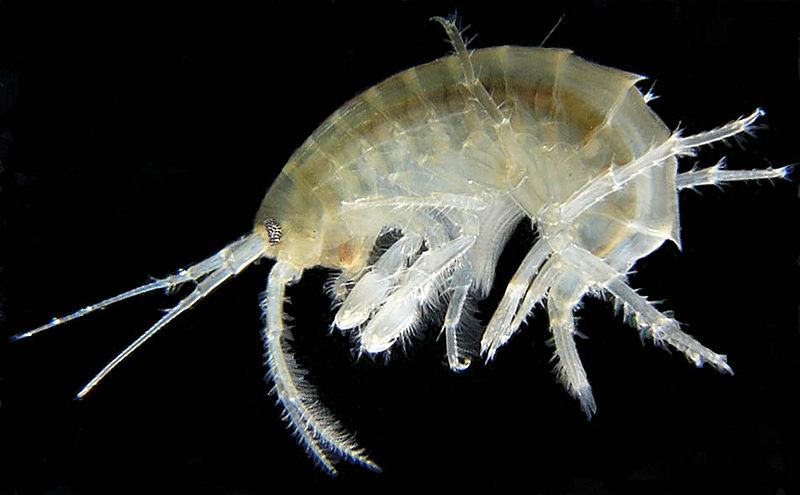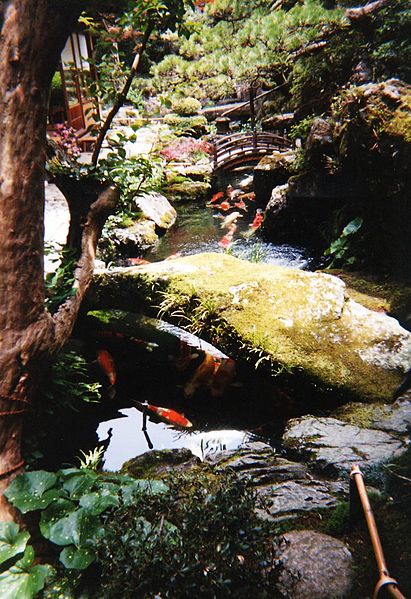 It’s that time of year again…time to slip on the rubber boots or waders to clean out the muck accumulated in the bottom of your pond. Though it’s always nice to see our finned friends coming back to the surface to see us after a long Winter, there are also many things we can encounter in the pond that most of us would rather be left unseen. I’m talking about the nasty, writhing, wiggling creatures that take refuge in the muck and dormant filtration. While there are thousands of microscopic creatures in a pond that you will probably never have the opportunity to see, it’s the worms and larvae that you can see with the naked eye that can cause panic or alarm if you don’t know what you’re looking at. I’d like to take this opportunity to talk to you about a few of the common critters you may find in your pond to hopefully save you some worries in the coming weeks. Read More »
It’s that time of year again…time to slip on the rubber boots or waders to clean out the muck accumulated in the bottom of your pond. Though it’s always nice to see our finned friends coming back to the surface to see us after a long Winter, there are also many things we can encounter in the pond that most of us would rather be left unseen. I’m talking about the nasty, writhing, wiggling creatures that take refuge in the muck and dormant filtration. While there are thousands of microscopic creatures in a pond that you will probably never have the opportunity to see, it’s the worms and larvae that you can see with the naked eye that can cause panic or alarm if you don’t know what you’re looking at. I’d like to take this opportunity to talk to you about a few of the common critters you may find in your pond to hopefully save you some worries in the coming weeks. Read More »
Tag Archives: pond maintenance
Feed SubscriptionPond Algaecides – Usage and Precautions
Hey guys, Justin here! Its about that time of year when your pond may be turning into something resembling large vat of pea soup. The water turns green, the liner turns green, and thick green strings of algae grow on everything! It’s painful to see, because you work so hard on your pond to keep it nice, clean, and clear. Though I recommend using algaecides only as a last resort, it is very important to ensure that you are using them correctly if you choose to go that route.
The first thing to know when treating your pond is the size of you pond in gallons. This is imperative, as over dosing algaecides can kill ornamental plants, frogs, snails, and even fish. Under dosing, while not harmful, is wasteful and will obviousle make the product less effective in combatting the algae. If you are not sure of how many gallons your pond holds, there are many formulas to help you determine the volume. Rectangular ponds use the formula Length x Width x Average Depth x 7.5, Circlular ponds Width x Depth x 70.5. Make sure that all of your measurements are in feet. Oddly shaped or angular ponds may be a little tricky, but generally you want to calculate using the surface area x the average depth. Once you have the volume of your pond calculated, simply follow the directions based on the manufacturers suggested doses.
Once you have added the algaecide to the pond, it is important to remember the last half of algaecide is “cide”. This means that algae will in fact die, and those of us that have kept ponds and aquariums know that dead organisms left in water start to break down. As the dead algae is being broken down by bacteria in the water, Ammonia and CO2 will be released into the water. Ammonia is very toxic to fish even at low levels. It is important to add bacterial additives to your water in conjunction with algaecides. The additional bacterial additives will convert the excess Ammonia to less toxic nitrite, then again into nitrate.
As the bacteria are breakdown the dead algae, they also release CO2. As the CO2 is released, it will actually force the available oxygen out of the water. When treating your pond with an algaecide, it is very important to have adequate aeration and surface agitation to supply your fish with vital oxygen. This is especially important during the warmer water months, as warmer water tends to hold less oxygen than cooler water. CO2 build-up in conjunction with the demize of oxygen contributing (and unsightly) algae, will cause an instant drop in available dissolved oxygen! Be aware of treating in the evening, too. Oxygenating plants will not produce as much oxygen in the evening and through the night. Even if you have bunches of oxygenating plants in the pond besides the algae, fish may still suffocate if the pond is treated late in the day. It is best to treat early in the day when you are able to observe how your animals are responding and take steps if necessary to add more aeration. (Low oxygen levels may cause fish to become sluggish, listless, or cause them to gasp at the surface or congregate at a fountain head or waterfall where more oxygen is available.)
Remove dead and decaying algae as much as possible, before it begins to cause other problems. Once the algaecide has run its course, it is recommended that you do a water change to remove the remaining algaecide and free floating algar, and vacuum the pond bottom to remove the debris. There are also a variety of “sludge removers” to help breakdown the remaining debris before problems begin.
Following these simple steps and precautions will ensure that your pond remains clean and clear and help you to avoid any algaecide caused fatalities (except the nasty green invader). Good Luck and happy pond keeping!
Koi Ponds in Autumn – Maintenance and Dietary Changes
Hello, Frank Indiviglio here. As fall arrives in the temperate zone, outdoor koi ponds will need some attention if all is to go well when the temperatures drop.
Basic Considerations
 The metabolisms of both koi and the various bacteria that occupy the pond and filter slow down as temperatures fall. Your fish will not be as hungry as usual, and leftover food will not decompose as quickly as in the summer. Dead plants and other organic material in the pond may also remain more or less “intact” through fall and winter.
The metabolisms of both koi and the various bacteria that occupy the pond and filter slow down as temperatures fall. Your fish will not be as hungry as usual, and leftover food will not decompose as quickly as in the summer. Dead plants and other organic material in the pond may also remain more or less “intact” through fall and winter.
However, don’t be fooled by the relative “quietness” of this time….as temperatures rise in the spring, decomposition will begin and the resultant ammonia spike may kill your fishes. Therefore, take care to be extra vigilant in removing organic detritus from your pond as fall approaches.
Cleaning
Be sure that your pond filter is in good shape and running well…rinse or replace filter media and continue with routine backwashes.
If necessary, install a leaf cover or net. This is not merely an aesthetic consideration…decomposing leaves will rob water of oxygen, lower the pH and increase the ammonia level.
To control the amount of dead plant material that enters the pond, remove any aquatic or emergent plants that will not survive the winter.
Health Checks
It is especially important that your koi be in good health as the weather changes. Immune systems will be stressed by the falling temperatures, leaving the fishes open to illness and parasitic infection. Bacteria and fungi that are ever present, and may be of little concern to healthy fishes, will prove dangerous to those not in the peak of condition during the fall and winter.
Feeding
As fall progresses, switch your koi from high protein pellets to more easily digested foods or wheat germ based pellets designed for use in cool water. Do not feed your fishes when temperatures drop below 52 F.
Temperature
Make sure that heaters or surface de-icers, if required, are in good working order. If you utilize a heater, set its thermostat for 62 F. Koi will feed lightly at this temperature, but keep an eye out for leftovers. In unheated ponds, cease feeding at 51 F.
Further Reading
For optimistic readers already thinking spring’s arrival, please see our article Koi, a Matter of Extremes in Spring.
Please check out our koi and outdoor pond books for further information.
For interesting forum comments and photos dealing with overwintering koi under extreme weather conditions, please see the forum at koi-bito.com.
Please write in with your questions and comments.
Thanks, until next time,
Frank Indiviglio
Japanese water garden image referenced from wikipedia and originally posted by Solipsist
 That Fish Blog – Aquarium Advice and Information
That Fish Blog – Aquarium Advice and Information
